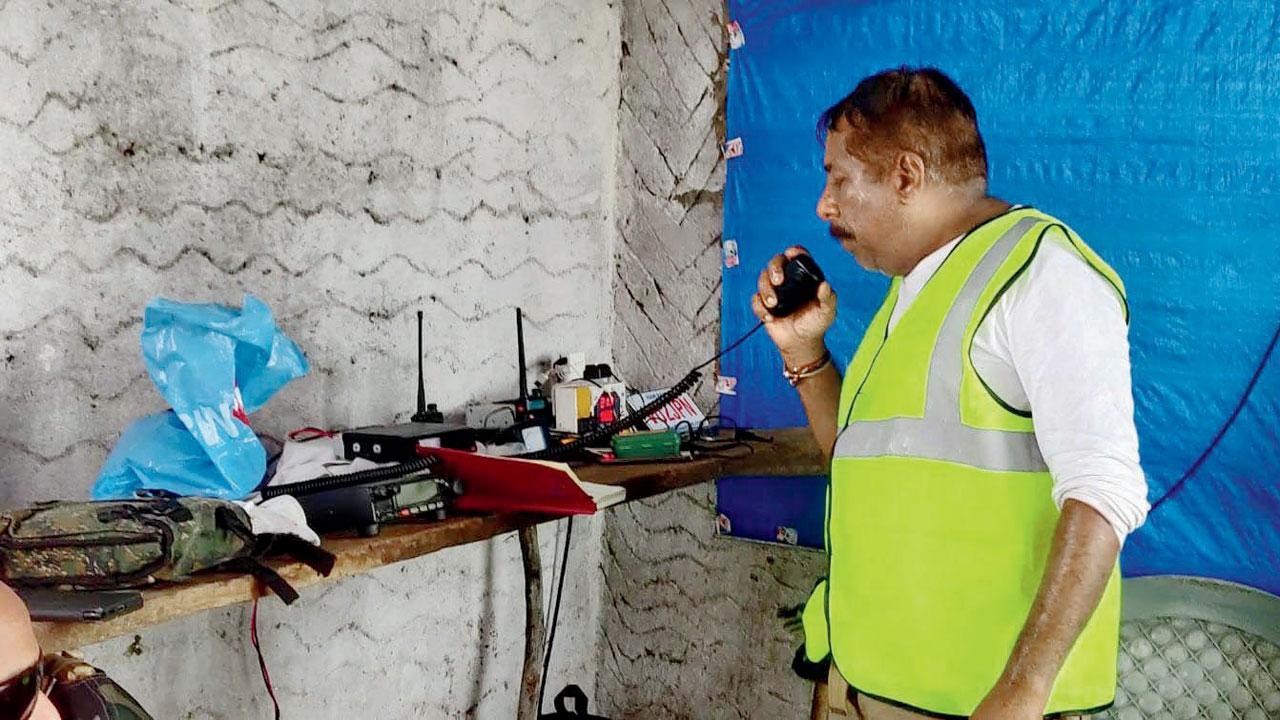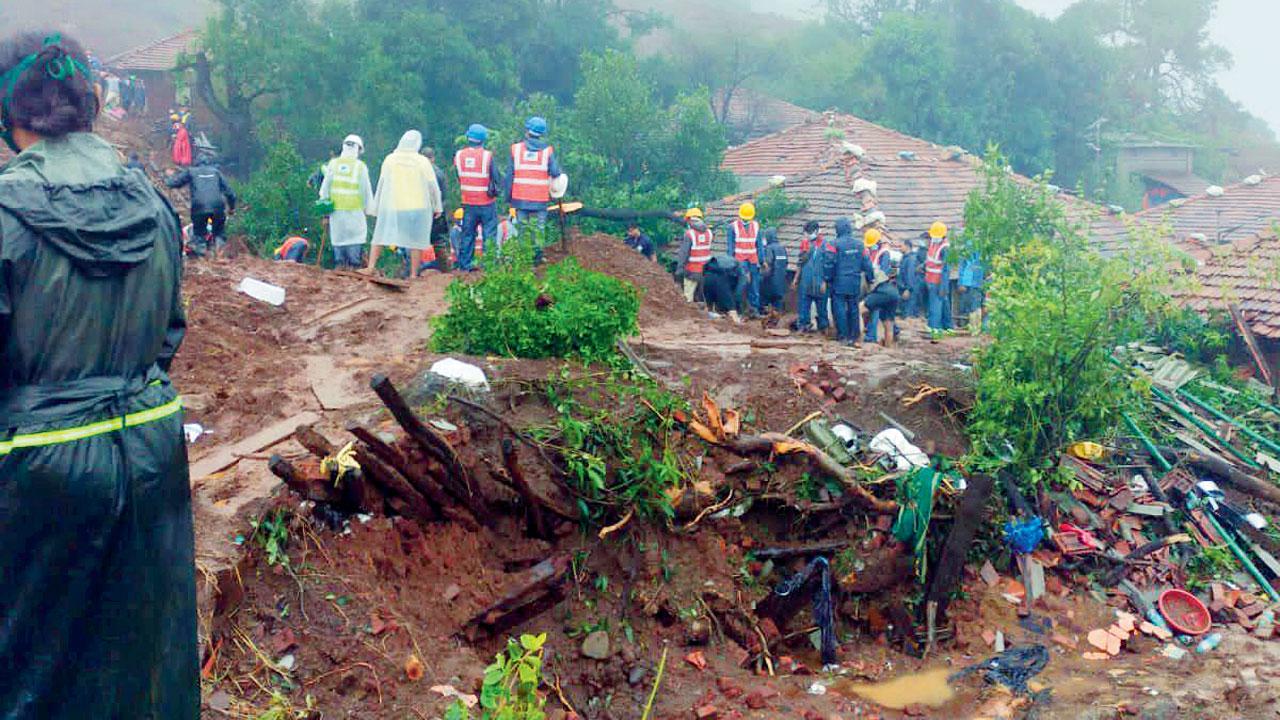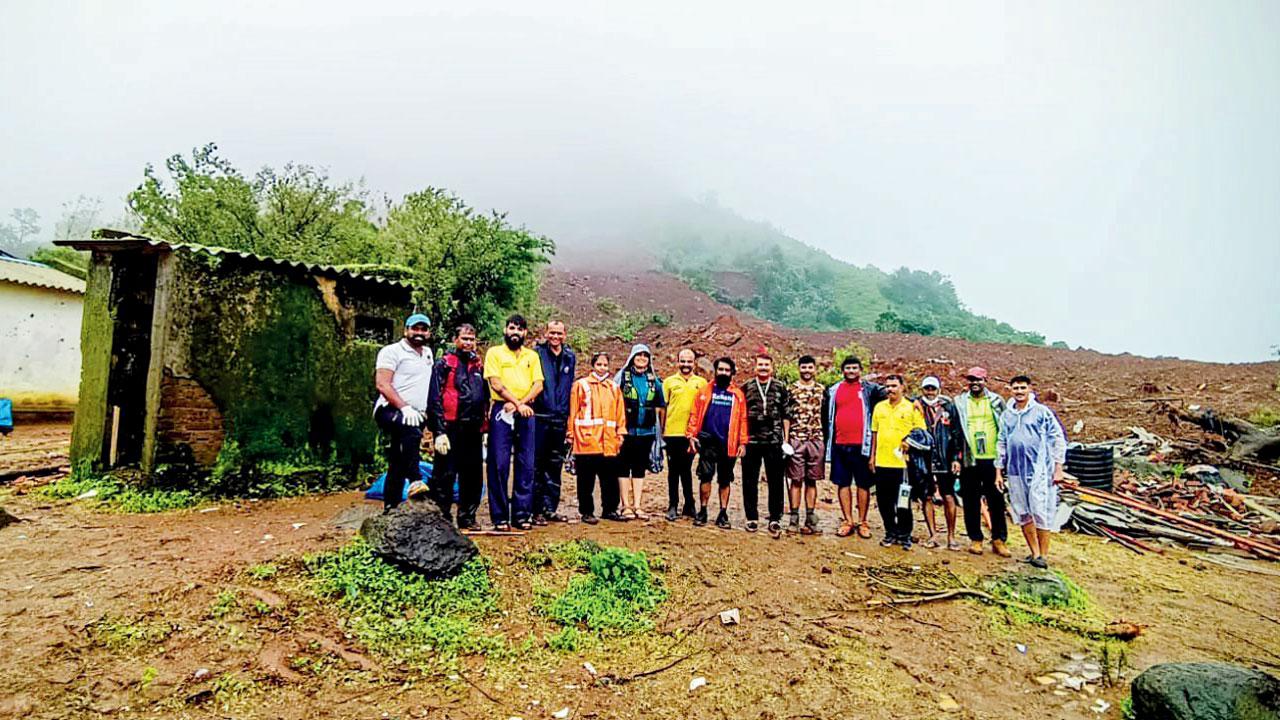With extreme conditions, it was amateur radio operators who helped with Irsalwadi rescue

HAM operator Jaiprakash Pullakudy at the landslide spot
‘Control calling ground zero,’ ‘Ground zero calling control’ were the repeated lines buzzing on channel 144.900 megahertz of the HAM radio, inquiring every few minutes about the extent of damage due to the landslide at Irsalwadi village and the assistance required at the rescue site.
ADVERTISEMENT
The HAM radio stood as the sole two-way communication device that could withstand gusty winds of over 40-50 kph and torrential rain, while poor weather conditions hampered search and rescue efforts and disrupted mobile networks and displays for some rescuers.
Fifty-one members of the ‘HAM Radio Search and Rescue Team,’ including businessmen, retired employees, college students, doctors and housewives from Mumbai, Dombivli, Thane and Pune, formed a team of ten HAM or amateur radio operators who maintained operational communication between the basecamp HAM control room and the hilltop where the rescue operation was underway.

The landslide spot at Irsalwadi
At the base camp HAM control room, Jaiprakash Pullakudy, 60, the senior-most member of the team and a resident of Tilaknagar, led the efforts. It was his first high-altitude search and rescue mission on a steep sleeper hill with no road connectivity, extreme weather conditions, and slush that posed a considerable risk.
Jaiprakash has over two decades of experience as a veteran HAM operator in Mumbai, operating HAM since 1995. He had participated in several disaster management operations, including the Gujarat earthquake in 2001, Chiplun and Kolhapur floods in July/August 2019, and Cyclone Nisarg in 2020.
The July 19 landslide at Irsalwadi reinforced his belief that mother nature is powerful and that immediate steps must be taken to safeguard nature and embrace sustainable development to mitigate climate change risks.
On the morning of July 20, after the landslide, the district disaster team attached to the Raigad collector’s office informed Jaiprakash’s colleague and team leader, Bimal Nathwani, about their deployment to the Irsalwadi site for search, rescue and communication.

Some of the search and rescue members at Irsalwadi
“We adhere to strict protocols and cannot volunteer for any search and rescue operation unless asked to join by the authorities concerned. It is a voluntary service. The first batch of over 20 team members reached the site on July 20 evening, supported by a large business house that provided transport, travel, food and lodging. Additional team members joined us later,” recalled Jaiprakash.
Challenging operation
Bimal mentioned that the climb to the affected landslide area took around one and a half hours, and the challenging operation was further complicated by extreme weather conditions and poor visibility.
Despite the swift establishment of the HAM base control room and antennas en route to the landslide spot, continuous heavy rains filled the search pits with water and slush, making the operation difficult for both the NDRF team and their volunteers.
“The climb to the affected landslide area took about one and a half hours, depleting 25 to 30 per cent of our energy. Unlike a regular disaster with accessible roads, we lacked the assistance of heavy machinery and public transport in Irsalwadi,” he explained.
Precautions taken
To face the daunting challenges of the operation, the local district administration provided necessary protective gear and ensured the area was sprayed with disinfectants to combat the foul smell arising from the debris.
Bimal added, “Initially, those victims who could be pulled out of the debris could be managed, but as weather conditions deteriorated, there were nail-biting instances where we could see a dead body amidst the debris, and before an attempt could be made to pull out the body, the heavy rains, would lash the area, and the pit would get covered with slush and water.”
Childhood passion
Jaiprakash’s passion for HAM radio stemmed from childhood interests, and he has since become licensed HAM operator. The government recognised the value of HAM operators in disaster situations, leading them to become an integral part of various disaster operations and civil defence efforts.
Pro bono service
In communication crises HAM radio came to the resuce. All HAM operators who participated in the search and rescue operation at the Irsalwadi landslide volunteered their services and equipment on a pro bono basis. They consider it an honour to assist state administrations and agencies that work tirelessly to save lives and property during disasters.
Coded HAM message decoded
>> HAM operators worldwide understand coded phonetic words as their individual call signs.
>> For example, Jaiprakash’s call sign is VU2JPN – Victor Uniform2 Juliet Papa November and Bimal Nathwani’s call sign is VU2CFE – Victor Unifrom2 Charlie Foxtrot Echo.
>> Vu2- general grade
>> Vu3- restricted grade
>> (Vu is the code for India)
July 19
Day of the landslide
 Subscribe today by clicking the link and stay updated with the latest news!" Click here!
Subscribe today by clicking the link and stay updated with the latest news!" Click here!







